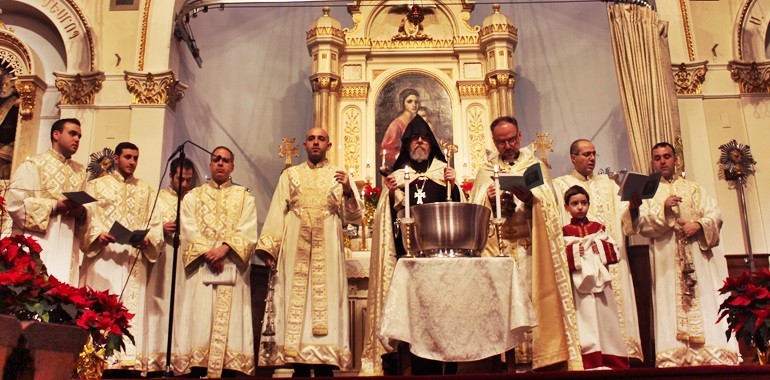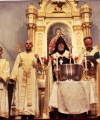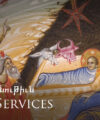Why Do Armenians Celebrate Christmas on January 6th?
It is frequently asked why Armenians do not celebrate Christmas on December 25th with the rest of the world. Obviously, the exact date of Christ's birth has not been historically established nor is it recorded in the Gospels. However, historically, all Christian churches celebrated Christ's birth on January 6th until the fourth century. The feast of Christmas was not a separate church feast for the first four centuries of Christian history. It was celebrated with Epiphany in the one great feast of God's appearance on earth in the form of the human Messiah of Israel.
The Nativity began to be celebrated on the twenty-fifth of December in order to offset the pagan festival of the Invincible Sun, which occurred on that day. The Church established it quite consciously as an attempt to defeat the false religion of heathens. Christ is the True Sun of Righteousness (Mal 4:2), who is himself worshipped by all of the elements of nature.
At the time, Christians used to observe these pagan festivities. In order to put an end to this pagan practice, the church hierarchy designated December 25th as the official date of Christmas and January 6th as the feast of Epiphany. However, Armenia was not affected by this change for the simple fact that there were no such pagan practices in Armenia at the time and the fact that the Armenian Church was not a satellite of the Roman Church. Thus, remaining faithful to the traditions of their forefathers, Armenians have continued to celebrate Christmas on January 6th until this day.
"Armenian Christmas," as it is popularly called, is a culmination of celebrations of events related to Christ's Incarnation. Theophany, or Epiphany (or Asdvadz-a-haydnootyoon in Armenian, which means "Revelation of God"). This is the central theme of the Christmas Season in the Armenian Church. During the Armenian Christmas season, the major events celebrated are the Nativity of Christ in Bethlehem and His Baptism in the River Jordan. The day of this major feast in the Armenian Church is January 6th. A ceremony called “Blessing of Water” is conducted in the Armenian Church to commemorate Christ’s Baptism.
BLESSING OF THE WATER IN REMEMBRANCE OF CHRIST’S BAPTISM
The Armenian Church celebrates the holy birth (Sourp Dznount) of Jesus Christ on January 6. In Armenian tradition, this feast day commemorates not only the birth of Christ, but also His baptism by John the Baptist. The latter is remembered through the "Blessing of Water" ceremony, which follows the Divine Liturgy on January 6. The mystery of our Lord's baptism in the River Jordan is remembered in the ceremony of the Jurorhnek, or the "Blessing of Water."
In ancient times, this ceremony was celebrated by the riverside or sea shore, but, for various reasons, it was later confined to the interior of the churches. During the ceremony, the cross is dipped in water, recalling Christ's immersion in the Jordan River. Blessed oil, or Holy Chrism (Muron), is poured into the water from a dove-shaped container, symbolizing the appearance at the baptism of the Holy Spirit in the form of a dove and the voice of the Father proclaiming to all that Jesus is His Son. The Holy Chrism is prepared in Holy Etchmiadzin and is blessed by the Catholicos assisted by the bishops. Muron contains olive oil, balsam and the essence of forty different flowers and herbs. At the end of the ceremony, members of the congregation are given the blessed water to drink, thereby sharing in the life giving act of Christ. As water is essential to the life of the body, drinking the blessed water is a reminder that participation in the acts of Christ is essential for eternal life.




